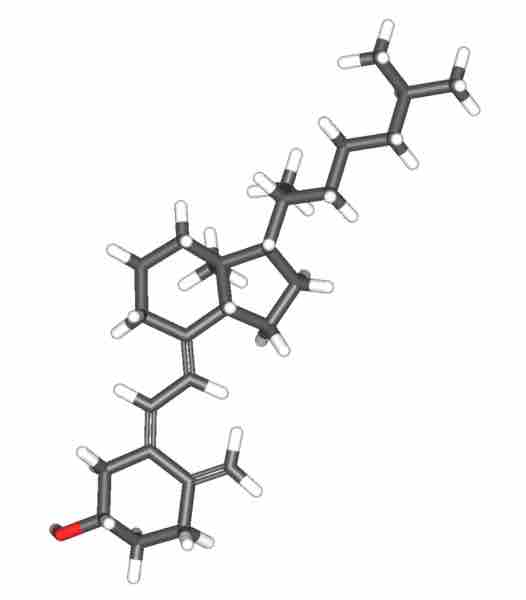The integumentary system is the largest of the body's organ systems, made up of the skin and its associated appendages. The integumentary system distinguishes, separates, and protects the organism from its surroundings, but also plays a key metabolic function, as the major region for vitamin D production.
Vitamin D refers to a group of fat-soluble steroids responsible for increasing intestinal absorption of calcium, iron, magnesium, phosphate, and zinc. In humans, the most important compounds in this group are vitamin D3 (also known as cholecalciferol) and vitamin D2 (ergocalciferol). Cholecalciferol and ergocalciferol can be ingested from the diet and from supplements, however very few foods are rich in vitamin D; and so synthesis within the skin is a key source.
Vitamin D deficiency is associated with impaired bone development in children, which leads to the development of rickets and a softening of bones in adults. Deficiency in vitamin D has been termed a modern disorder associated with both a poorer diet and reduced time spent outside.
Vitamin D Synthesis
The human skin consists of three major layers: the epidermis, dermis, and hypodermis. The epidermis forms the outermost layer, providing the initial barrier to the external environment. Beneath this, the dermis comprises two sections, the papillary and reticular layers, and contains connective tissues, vessels, glands, follicles, hair roots, sensory nerve endings, and muscular tissue. The deepest layer is the hypodermis, which is primarily made up of adipose tissue.
Vitamin D is produced in the two innermost strata of the epidermis, the stratum basale and stratum spinosum.

Vitamin D
The chemical structure of vitamin D.
Vitamin D3 is made in the skin when the 7-dehydrocholesterol reacts with ultraviolet light of UVB type at wavelengths between 280 and 315 nm, with peak synthesis occurring between 295 and 297 nm.
Depending on the intensity of UVB rays and the minutes of exposure, an equilibrium can develop in the skin, and vitamin D degrades as fast as it is generated. Vitamin D from the diet or that is synthesized by the body is biologically inactive; activation requires enzymatic conversion in the liver and kidney.

Metabolism and pathway map for vitamin D
Vitamin D synthesis pathway